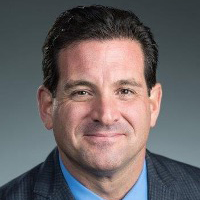Imagine moving a massive ship singlehandedly. Sounds far-fetched, but ancient accounts say the Greek mathematician Archimedes did just that using a clever system of levers and pulleys eurovps.com. He famously boasted, “Give me a place to stand and a lever long enough, and I shall move the world.” That story illustrates the core idea of leverage: with the right lever, a small effort can yield a mighty result. Now, we’re not here to talk about moving ships—we’re talking about moving the needle on your retirement portfolio.
As a CPA practice owner, you’ve built a career on understanding numbers and efficiency. Financial leverage applies Archimedes’ principle to your personal finances: it means using other people’s money or assets (like loans or insurance) to potentially amplify your financial outcomes.
In a personal portfolio context, leverage can help you do more with the money you have by strategically borrowing or utilizing assets to boost growth, increase cash flow, and add flexibility. In this article, we’ll explore three core leverage strategies. We’ll cover:
- Insurance-based leverage – Using tools like Indexed Universal Life insurance to create tax-advantaged income through premium financing structures that amplify contribution power.
- Investment-backed loans – Strategically borrowing against your investment portfolio to maintain market exposure while accessing liquidity for additional growth opportunities.
- Real estate/home equity strategies – Tactically tapping into your home's value (via HELOCs or refinancing) to reinvest for retirement, creating multiple income streams from a single asset base.
Let’s dive in, starting with an unlikely “bank” you might not have considered: your life insurance.
Strategy 1: Leveraging Insurance for Tax-Advantaged Income
When you hear “life insurance,” you probably think of family protection. But certain advanced strategies use life insurance as a financial lever—literally borrowing money to amplify your retirement potential. One powerful approach is a Leveraged Indexed Universal Life (Leveraged IUL) policy, often called “premium financing.”
Leveraged IUL involves taking out a third-party loan—usually from a specialized lender—to fund substantial insurance premiums. Instead of using only your own capital, you strategically borrow at relatively low-interest rates to significantly increase the cash value of your policy. This cash grows tax-deferred, linked to market indexes with safeguards against market losses, and later can be accessed through tax-free policy loans.
How does it work in practice? You arrange financing to pay policy premiums, drastically amplifying your funding capability compared to using only personal cash. Over time, the policy builds considerable cash value. Later, in retirement, you repay the initial loan from the policy’s growth, and any remaining cash value becomes your source of tax-free retirement income via policy loans.
Let’s paint a picture of what that could look like:
Example: Robert, 45, implements a premium-financed IUL strategy. Instead of funding the entire premium himself, he contributes $50,000 annually while a specialized lender finances an additional $150,000 per year (creating a total annual premium of $200,000). Over 10 years, Robert contributes $500,000 while the lender provides $1.5 million in financing—establishing a $2 million total premium basis.
By age 65, with the amplified funding and indexed growth, the policy’s cash value grows to approximately $3.5 million. After repaying the $1.5 million loan (plus accumulated interest of approximately $750,000), Robert has access to $1.25 million in remaining cash value. He can withdraw $90,000 annually as tax-free policy loans for 20 years of retirement—totaling $1.8 million in tax-free income. That’s over three times his personal contribution! The leveraging effect is substantial: by using premium financing, Robert established a policy that would have been unattainable using only his personal capital, ultimately generating significantly more tax-advantaged retirement income.
Why consider Leveraged IUL?
Amplified Growth Potential: Borrowed funds allow you to fund larger premiums and build higher cash values, significantly enhancing your retirement income potential.
Tax-Advantaged Income: Policy loans used for retirement income are tax-free, preserving more of your wealth.
Downside Protection: Leveraged IUL policies typically include floors preventing cash-value losses during market downturns.
Asset Efficiency: You preserve your personal capital for other investments, enhancing overall financial flexibility.
Keep in mind: Leveraged IUL involves sophisticated financial structuring, and it’s essential to carefully manage loan interest payments and ensure the policy remains viable. However, for CPA practice owners comfortable with the disciplined financial planning required, leveraging insurance can significantly amplify retirement outcomes.
Strategy 2: Investment-Backed Lines of Credit (Using Your Portfolio as a Lever)
Next, let’s consider the investments you already own—stocks, bonds, mutual funds. Did you know you can use those as collateral to borrow money? This is commonly done through a securities-backed line of credit (SBLOC) or similar arrangement with a broker or bank.
In plain English, it means borrowing against your investment portfolio without having to sell anything. Think of it like a home equity line of credit, but instead of your house, your stocks and bonds are the asset backing the loan. This strategy leverages your portfolio to give you cash for other purposes, all while your investments stay in the market.
You’re likely familiar with this concept in a business context: companies often borrow against assets to fund new opportunities rather than liquidate those assets. Here, you are the business, and your portfolio is the asset you’re borrowing against.
How does it work?
Typically, a lender will extend a line of credit up to a percentage of your portfolio’s value (for example, 50–70% of a well-diversified investment account). You can then draw cash as needed. You pay interest, usually at a relatively low rate, since the loan is secured by your investments. Importantly, you’re not forced to sell your stocks or bonds to get liquidity. Your portfolio continues to earn dividends, interest, and (hopefully) capital gains. This means you avoid triggering a taxable event from selling investments and you keep the power of compounding working for you investopedia.com.
Let’s bring this to life with a simple scenario:
Example: Raj has a $500,000 taxable investment portfolio. He needs $100,000 to expand his CPA practice (it could be for any opportunity—say, buying a rental property or covering an emergency). Instead of selling $100k of his investments (and possibly incurring capital gains tax), Raj sets up a securities-backed line of credit with his brokerage. They allow him to borrow up to 50% of his portfolio’s value. He takes a $100,000 loan at, say, 4% interest.
Raj uses the $100,000 for his needs and leaves his portfolio intact. Over the next 5 years, suppose his portfolio grows around 7% per year; the $500k might grow to roughly $700k. Had he sold $100k and only invested $400k, that might grow to about $560k. By leveraging his investments, Raj’s portfolio ends up about $140k higher than it would have been without the loan. Meanwhile, he paid roughly $20k in interest over five years. Even after paying the loan off, Raj comes out well ahead (netting over $100k more in wealth) – and he avoided a big capital gains tax hit by not selling in the first place.
This example shows the amplifying effect of leverage: Raj’s original money kept working and growing, and the borrowed money helped him seize an opportunity.
Why consider an investment-backed loan?
Keep Investments Working: By not selling, your portfolio can keep compounding and growing. A line of credit helps you stay invested instead of forcing a sale.
Tax Efficiency: Borrowing against assets gives you cash without triggering capital gains taxes from selling. That can mean significant tax savings for a high-earner.
Flexibility and Low Cost: Set up these credit lines quickly and pay interest only on what you use. With your investments as collateral, rates are relatively low—giving you an affordable, convenient safety net.
Be aware: With great power comes great responsibility. If your portfolio falls significantly in value (say, during a market downturn), the lender may require you to pay down part of the loan or add more collateral – that’s the infamous margin call investopedia.com. As a prudent measure, you wouldn’t want to borrow the maximum or use this strategy if you couldn’t handle that scenario.
Also, interest rates can change, so the cost of borrowing might rise if market rates increase. The key is to use this leverage sparingly and wisely – for example, to bridge short-term needs, to invest in an opportunity that should outearn the interest cost, or as a backup source of funds so you don’t have to sell investments at a bad time.
Strategy 3: Putting Home Equity to Work (Real Estate Leverage)
For many people, their home is their biggest asset. Over the years, you’ve diligently paid down your mortgage (or perhaps paid it off), and your home’s value has grown. The result? A significant amount of home equity locked in your house. In fact, U.S. homeowners held more than $35 trillion in home equity as of 2024 empower.com– an all-time high. If you own a home, a substantial portion of that equity might be yours.
Rather than letting that wealth sit idle, you can leverage it to fortify your retirement. The two primary ways to tap home equity are Home Equity Lines of Credit (HELOCs) and cash-out refinancing. Both essentially let you borrow against the value of your home, turning equity into cash you can use. A HELOC works like a credit line you can draw from as needed, while a cash-out refi replaces your mortgage with a larger one and gives you a lump sum of cash for the difference.
How does this become a retirement booster? By taking that equity cash and reinvesting it into assets that produce income or growth for your future. You’re using the bank’s money (secured by your house) as a lever to potentially increase your wealth. Of course, you’ll pay interest on the loan, but if done prudently, the returns on the investments you make can outweigh the cost of borrowing.
Let’s illustrate with a straightforward example:
Example: Maria owns her home, worth $400,000, and has $200,000 left on her mortgage. She opens a HELOC, and the bank gives her a line of credit up to 80% of her home’s value minus the mortgage (that works out to a $120,000 credit line). She doesn’t need it all, but she withdraws $100,000 at a 5% interest rate.
Maria then invests that $100,000 into a diversified portfolio for her retirement. Let’s say her investments earn about 7% per year on average. In 10 years, her $100k could grow to roughly $200,000. During that time, if the HELOC interest cost her about $5,000 a year, she’d pay around $50,000 in interest. After 10 years, Maria could sell a portion of her investments (or use other savings) to pay back the $100,000 loan. Even after repaying it and covering interest, she might be left with around $50,000 in net profit from the investment. In short, she turned idle home equity into roughly $50k of additional wealth for her retirement.
In Maria’s case, the leverage turned into a substantial gain that she might not have had otherwise. Plus, any investment earnings could potentially be used to supplement her retirement income.
Why consider a home equity strategy?
Unlocking Idle Equity: Instead of being “house rich and cash poor,” you can convert some of your home’s value to cash to invest elsewhere. This puts your equity to work and diversifies your wealth beyond just real estate.
Potential for Arbitrage: If your investment returns exceed the cost of the loan, you keep the difference as profit. (In Maria’s case, borrowing at ~5% and earning ~7% left her ahead.)
Flexible Use of Funds: You can deploy home equity money for anything—investments, a new property, a business, or emergencies. It also serves as a backup cash source so you’re not forced to sell other assets at a bad time.
Heads up: Leverage always comes with risks. With a HELOC or mortgage, you’re putting your home on the line. If real estate values drop or if interest rates rise sharply, the cost of borrowing could become burdensome. You also have to ensure you can cover the interest payments (and eventually pay back the principal) out of your cash flow. Essentially, don’t bet the farm (or in this case, the house) on an investment—always consider what could happen in a worst-case scenario (e.g., your investments underperform or the housing market dips). That said, using a moderate portion of your equity and investing in quality assets can tilt the odds in your favor.
Wrapping Up: Making Leverage Work for You
In summary, leverage is a powerful tool that, when used wisely, can potentially enhance your retirement outcomes. It’s not about taking reckless risks but about strategically using resources to achieve more. As a CPA, you understand the value of due diligence – the same applies here. Evaluate each strategy in light of your own circumstances and comfort level, and remember that what works for one person may not be right for another.
If you’d like to explore how these leverage strategies could play a role in your personal retirement plan, we invite you to reach out. Contact us for a free personalized retirement snapshot, and let’s see how the right lever (or two) might help boost your retirement security. Sometimes, a small adjustment in strategy can have a big impact – and we’re here to help you make that happen.










